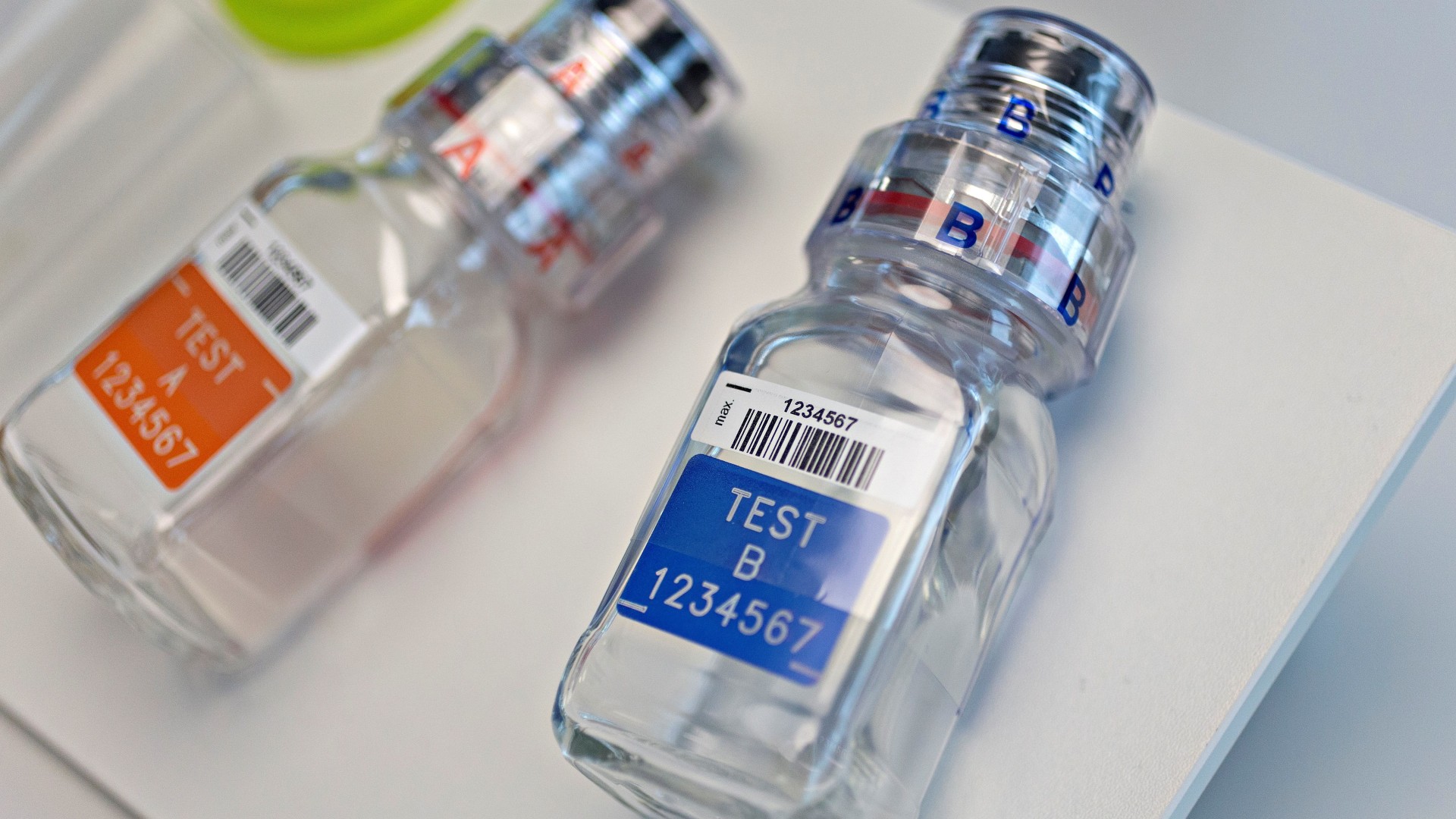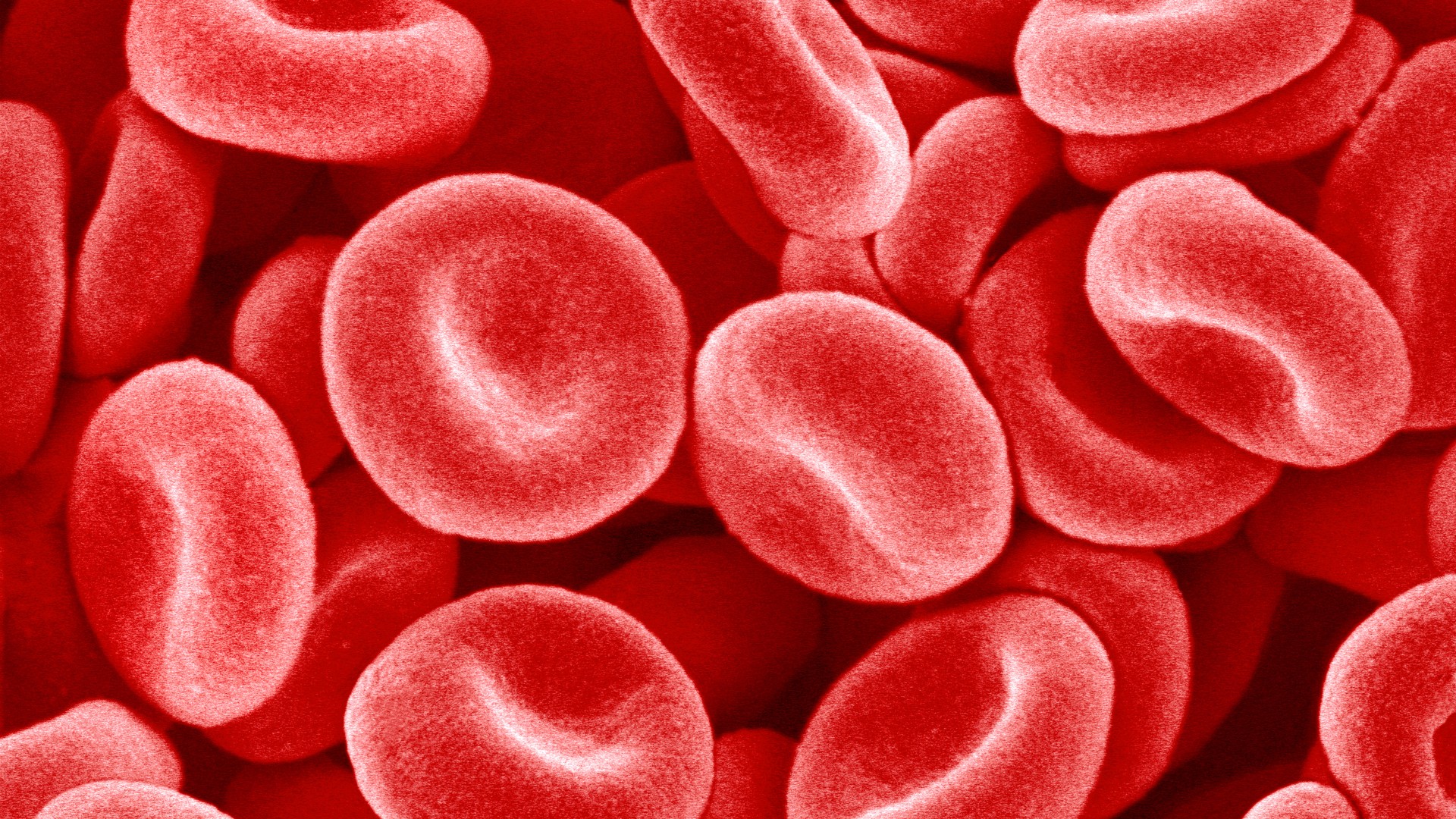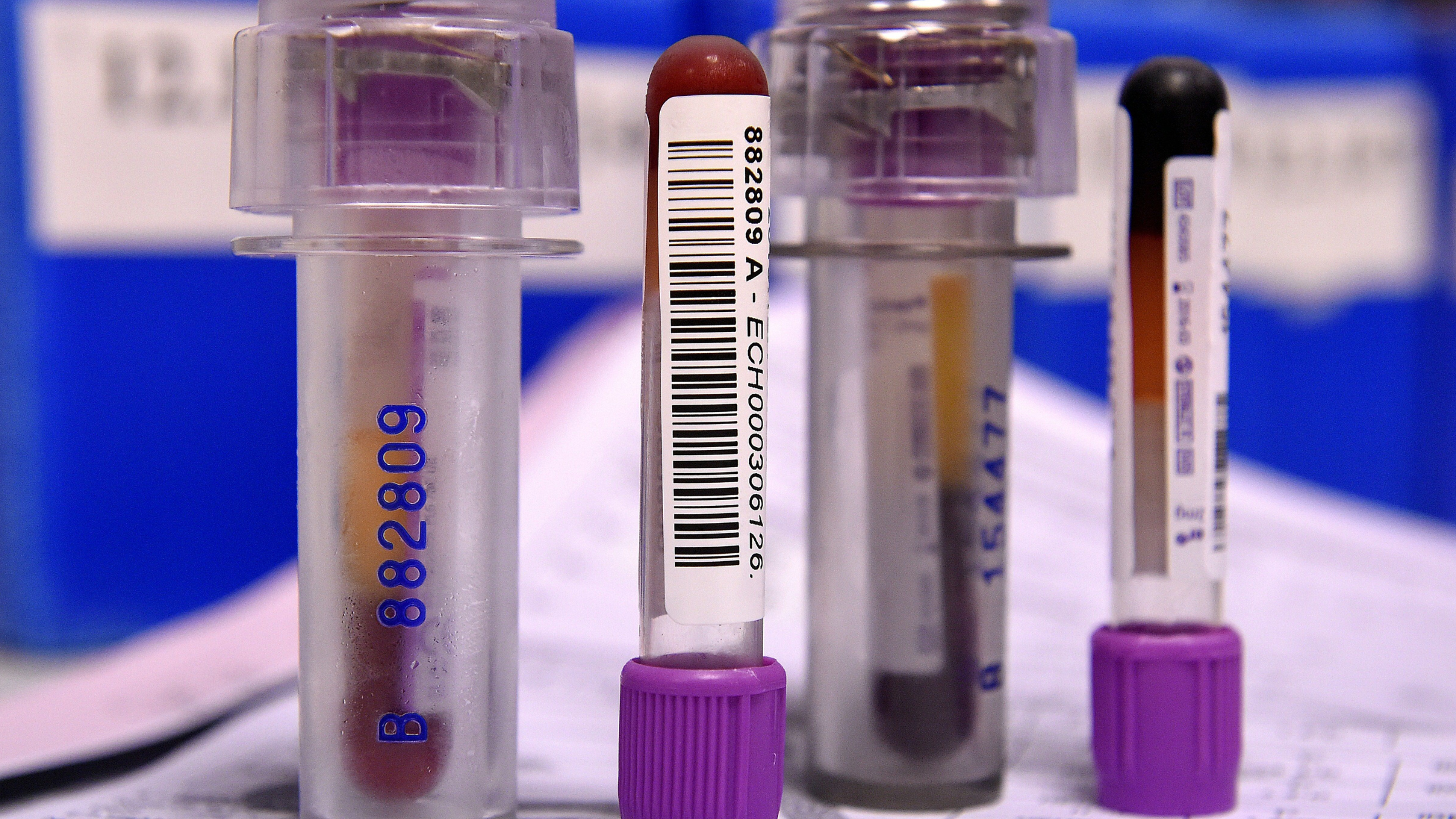What is doping? And which performance-enhancing drugs are banned?
Many drugs are forbidden for use by athletes in major international competitions, such as the Olympics. Here's the justification.

Major sporting events like the Olympic Games always raise the topic of "doping" — the use of banned substances capable of boosting athletic performance.
Athletes may dope for a variety of reasons, including the media pressure to win and the financial rewards that are tied to success. Very competitive athletes can be vulnerable to the idea that drugs may help them gain a "secret edge," Thomas Hildebrandt, a clinical psychologist at the Mount Sinai Health System in New York, told Live Science.
Athletes can also hold a belief that "everyone's doing it," whether they are or aren't, which can make doping seem normal, he said.
The World Anti-Doping Agency (WADA), an independent agency that coordinates global anti-doping policy, maintains an extensive list of banned substances and methods thought to increase an athletes' performance. Many items on the list are banned during competitions, specifically, and others are also banned during training.
WADA rules apply not only at the Olympics but also during other high-stake competitions, such as the FIFA World Cup, the Tour de France and international tennis competitions.
Here is a look at what is currently banned by WADA as of January 2024, and how these substances and methods are thought to work in the body to give athletes an edge.
Related: What's the most dangerous sport in the world?
Get the world’s most fascinating discoveries delivered straight to your inbox.
Substances that are banned at all times
The following substances are banned at all times, both in competition and during training. There are a few exceptions to this, including if an athlete has an illness or medical condition that requires them to take a specific medication.
Anabolic agents

The term "anabolic agents" broadly refers to drugs that stimulate muscle growth and development. One of the primary examples of anabolic agents are androgenic steroids. These are synthetic versions of androgens, or male sex hormones, such as testosterone and dihydrotestosterone.
Androgenic steroids are designed to bind to the same receptors in the body as the hormones they mimic, thus triggering similar effects. In skeletal muscle, the drugs can lead to artificial increases in muscle mass and strength. Androgenic steroids differ from testosterone replacement therapy, which is designed only to bring a person's testosterone levels back to normal if they are deficient.
Androgenic steroids drugs may increase people's performance in sports where having stronger muscles is particularly handy, such as weightlifting and boxing. However, they can't improve an athlete's agility or skill. If used improperly, these drugs can also cause serious side effects, including high blood pressure, heart disease, liver damage and stroke.
Growth factors and peptide hormones

Growth factors are substances that primarily act on muscle and bone to, as the name implies, promote growth. Specifically, these substances stimulate cells to replicate, Hildebrandt said. This can lead to bigger muscles. Examples of banned growth factors include fibroblast growth factors (FGF) and insulin-like growth factor 1 (IGF-1).
Another banned growth factor is erythropoietin (EPO). Rather than stimulating muscle growth, EPO triggers the production of red blood cells, which are the cells that deliver oxygen to tissues via the bloodstream. A greater number of red blood cells means that the blood can carry more oxygen to muscles, which enhances performance. Using EPO is sometimes referred to as "blood doping."
This group of drugs are particularly challenging to detect because they include naturally occuring hormones, such as IGF-1, said Rhonda Orr, an associate professor of exercise and sport science at the University of Sydney. It is unknown how prevalent blood doping is, but one study suggests it could be as high as 22% in endurance athletes.
Beta-2 agonists

Beta-2 agonists are a class of drugs typically found in asthma inhalers. During an asthma attack, they help relax the muscles of the airways. WADA places strict limits on the type and amount of beta-2 agonists that can be inhaled by athletes with asthma or similar conditions, and it bans the drugs for all other athletes.
When certain beta-2 agonists are taken by mouth, they can enhance an athlete's performance by stopping muscle from degrading, Hildebrandt said. Specifically, they exert their action on fast-twitch muscle fibers in skeletal muscle that are responsible for bursts of fast, powerful movement.
This effect can make it easier for athletes to build up their muscles and improve their endurance, which can help them to avoid muscle fatigue, he said.
Related: Which Olympic sport burns the most calories?
Hormone and metabolic modulators

Another category of drugs that are banned by WADA at all times are hormone and metabolic modulators.
One example of these drugs are aromatase inhibitors, such as anastrozole and letrozole, which impede the action of an enzyme called aromatase. This enzyme is responsible for converting androgen hormones into estrogen — one of the primary female sex hormones. Aromatase inhibitors are used to treat breast cancer, as estrogen is known to stimulate the growth of breast cancer cells.
However, these drugs can also be misused by athletes to keep testosterone levels in their body at a very high level, which could potentially improve their performance in a similar way to taking synthetic testosterone.
Diuretics and masking agents

Diuretics are substances that make a person produce more urine. This means that they can help athletes shed unwanted water weight before a competition. In addition, athletes sometimes use these compounds to flush out other drugs from the body, so that they don't show up in urine tests, Hildebrandt said.
In this way, diuretics can act as a so-called masking agent — in other words, a substance that's used to cover up, or mask, the presence of other doping drugs in a lab test, he said. For this reason, diuretics are banned at all times, unless an athlete needs them for therapeutic purposes.
WADA also bans other substances that act as masking agents, such as desmopressin.
Non-approved substances

The name "non-approved substances" may appear redundant as none of the substances that are banned by WADA are approved for use by athletes to enhance performance. However, this category represents a broader class of substances that are not approved for use in humans for any reason at all, Orr said.
This includes drugs that are still in clinical development or that have been discontinued; so-called designer drugs, which are synthetic versions of legally restricted or prohibited drugs; and substances that are only approved for use in animals.
The list of substances that athletes are willing to use in order to gain an edge over competitors keeps on expanding, which makes it harder for Olympic officials to keep up with testing, Orr said.
Related: At what age does athleticism peak in different sports?
Banned methods

In addition to banning drugs, WADA also prohibits several non-pharmaceutical, performance-enhancing techniques.
For instance, athletes sometimes train at a high elevation, where the lower levels of oxygen in the air trigger the body to produce more red blood cells. Such training isn't banned, but sometimes athletes collect and store some of their blood that contains extra red blood cells. Then, just before a competition, they re-infuse it into the body, Hildebrandt said. This practice is banned because it means that these athletes have extra red blood cells in their blood to carry more oxygen to their muscles.
Other practices that WADA forbids include tampering with samples collected during drug testing and using gene-editing technologies that may enhance performance.
Substances banned only in competitions
Stimulants

Stimulants are drugs that can increase an athletes' energy, attention and focus, while potentially giving them a "psychological edge" over competitors, Hildebrandt said. For instance, the drugs could provide a boost for a tennis player in a five-hour match in which every stroke counts, he said.
Examples of stimulants include cocaine and amphetamines. These drugs share similar effects but work differently in the body and last different lengths of time.
Narcotics & cannabinoids

Narcotic drugs which include opioids like morphine and heroin, may seem like odd choices for people wanting to enhance their athletic prowess. Similarly, cannabinoids, the active ingredients found in cannabis, aren't known for boosting athletic ability. However, these substances are instead banned because of their pain-blocking abilities.
The concern is that athletes who take these drugs can compete through pain that would otherwise force other people to give out, Hildebrandt said. For sports where the amount of pain an athlete has to endure really matters — like boxing or wrestling — blocking pain could give an athlete a competitive advantage, he said.
Related: Runners enjoyed their workouts more after using cannabis, but physically floundered
Glucocorticoids

Glucocorticoids, such as the stress hormone cortisol, are steroid hormones that are produced by the adrenal glands on top of the kidneys. They play a role in what's known as the "fight or flight" response, which is the body's automatic, physiological reaction to perceived threats. This response can cause a person's heart rate and blood pressure to go up, making them feel "amped up," Hildebrandt said. It wouldn't be unusual for an athlete's fight-or-flight system to kick in during a high-stake competition, but the idea is that the drug can kick this into high gear.
For athletes, this could mean that they become more primed to act and can respond to things more quickly, Hildebrandt said.
Substances banned in particular sports
Beta-blockers

Some substances are banned by WADA in only certain sports. One example are beta-blockers, which are drugs that are typically used to treat heart disease and other conditions. They work by blocking the release of stress hormones — such as epinephrine, also known as adrenaline — and thus slowing a person's heart rate and reducing their blood pressure.
Beta-blockers inhibit the sympathetic nervous system, which governs the fight-or-flight response, so they can make people feel more relaxed and less anxious. They can also reduce tremors, which may be beneficial for athletes competing in specific events that require high-precision movements.
CThus, these drugs are banned by WADA in sports like darts and golf during competitions, and in sports such as archery and shooting at all times.
The WADA updates its list of banned substances and practices every year. Since the initial list's release in 2004, substances like the narcotic tramadol and the anabolic agent Epiandrosterone have been added, and more are sure to come in the future.
Editor's note: This story was last updated on August 2, 2024. An earlier version of the article was published August 10, 2016.
This article is for informational purposes only and is not meant to offer medical advice.
Ever wonder why some people build muscle more easily than others or why freckles come out in the sun? Send us your questions about how the human body works to community@livescience.com with the subject line "Health Desk Q," and you may see your question answered on the website!



